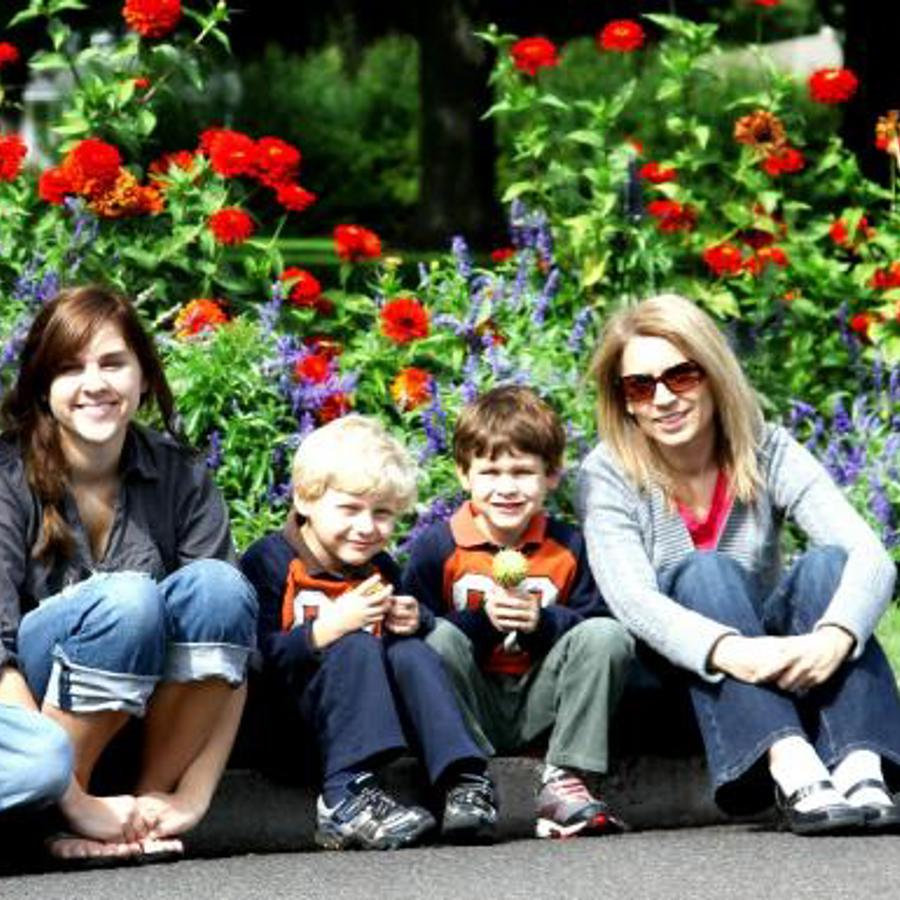
How can I share the same amount of DNA but different numbers of segments with siblings?
February 19, 2019

- Related Topics:
- Ancestry tests,
- Consumer genetic testing,
- Relatedness
A curious adult from the US asks:
"I have two half-siblings and share DNA with one at 28.7% and the other at 24.6%, which I assume is normal. However, according to 23andMe, the brother sharing the most DNA shares only 47 segments versus 55 segments with the other brother. Is this also considered normal?"
The short answer is yes, that’s completely normal! There are a couple of reasons for why this is true.
DNA Comes From Both of Our Parents
We each get half our DNA from mom and half from dad. This DNA is packaged into pieces called chromosomes. Instead of having one really long piece of DNA, your DNA is broken into 23 pairs of shorter pieces called chromosomes. You get one chromosome in each pair from mom, and one from dad.
This means you share 23 pieces of DNA with mom, and 23 pieces of DNA with dad. In other words, you share 23 segments of DNA with each parent. Each of these segments is really long — an entire chromosome!
Our parents also get half their DNA from their mom and half from their dad. This means we get about ¼ from each of our grandparents. But exactly which ¼ of their DNA you inherit can vary depending on which copy of each chromosome mom or dad passes down at random.
Because of this, relatives will share some of their DNA, but not all of it. Since you and your half siblings all share one parent, you have a lot of DNA that is the same.
You each randomly got about half your DNA from this shared parent. But since your other parent is not shared, you’ll also have DNA that is different.
This means that on average you will share ¼, or 25% of your DNA with your half siblings.
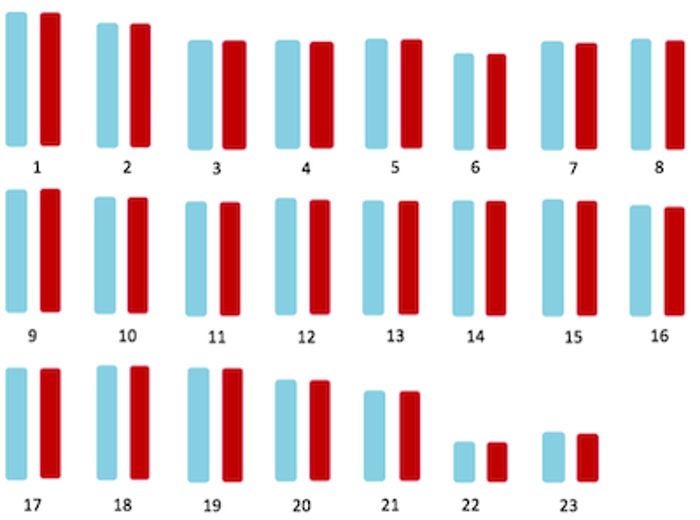
Recombination shuffles genes around
It turns out that whole chromosomes aren’t passed down from generation to generation. You don’t have an entire chromosome from Grandma, and another chromosome from Grandpa. Instead, chromosomes get mixed up in a process called recombination.
When DNA is being passed down, chromosomes actually break and segments switch strands. This means that some of the DNA from Grandpa may end up on the same chromosome as DNA from Grandma. You’ll get an entire chromosome from your mom…but it will be a mixture of DNA from both her mom and her dad.
Depending on how this happens, you might get different proportions of DNA from each grandparent compared to your siblings. It’s all of this shuffling around of genetic information that makes us each such unique individuals! For more about recombination check out the answer to another question.
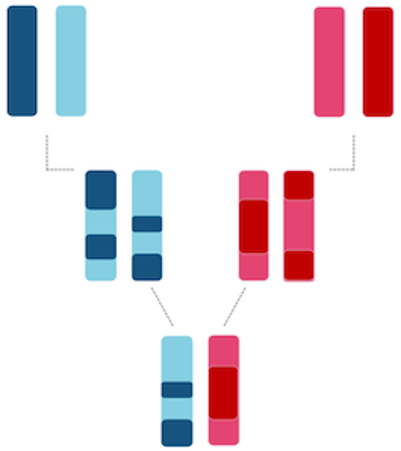
DNA segments come in all different lengths and sizes
With both of those processes in mind, you can use the amount of shared DNA to tell how closely someone is related to you.
On average full siblings will share about 50% of their DNA, while half siblings will share about 25% of their DNA. The actual amount may vary slightly since recombination will shuffle the DNA differently for each child.
But why is the number of segments different from the overall percent of shared DNA?
These two numbers are comparing different things. The segment count only looks at the number of shared chunks. The percentage of shared DNA is based on the total length of the chunks. It’s kind of like counting the number of words shared between two documents versus the number of letters.
So why does one half-brother share 47 segments and 29% of his DNA with you, while the other shares 55 segments and 25% DNA? The segments you share with the first brother are just longer.
Depiction of chromosomes segments for a half-sibling relationship:
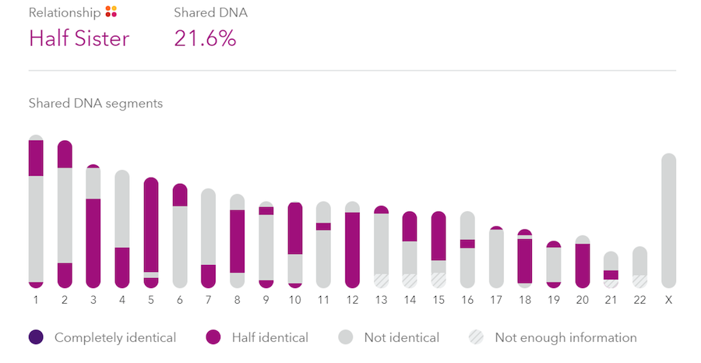
Depiction of chromosomes segments for a full-sibling relationship:
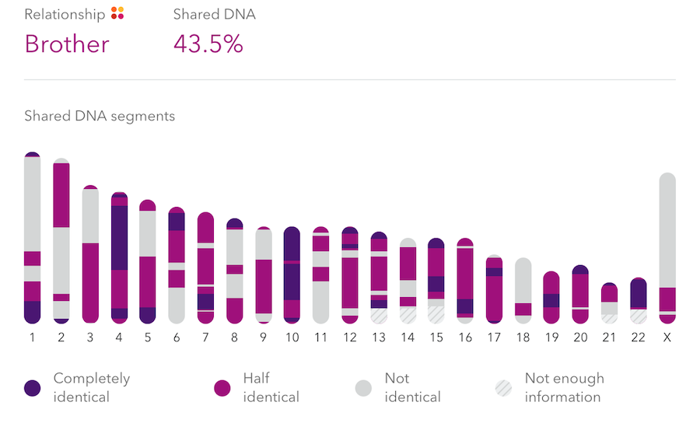

Author: Natalie Deuitch
When this answer was published in 2019, Natalie was a student in the Stanford MS Program in Human Genetics and Genetic Counseling. She wrote this answer while participating in the Stanford at The Tech program.
 Skip Navigation
Skip Navigation
